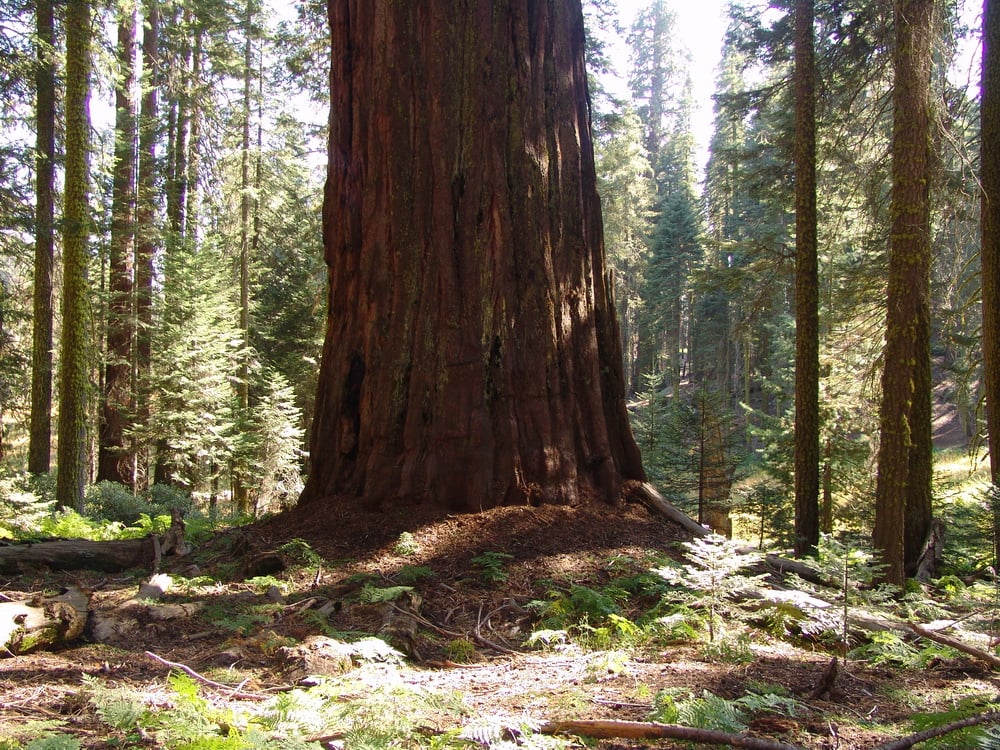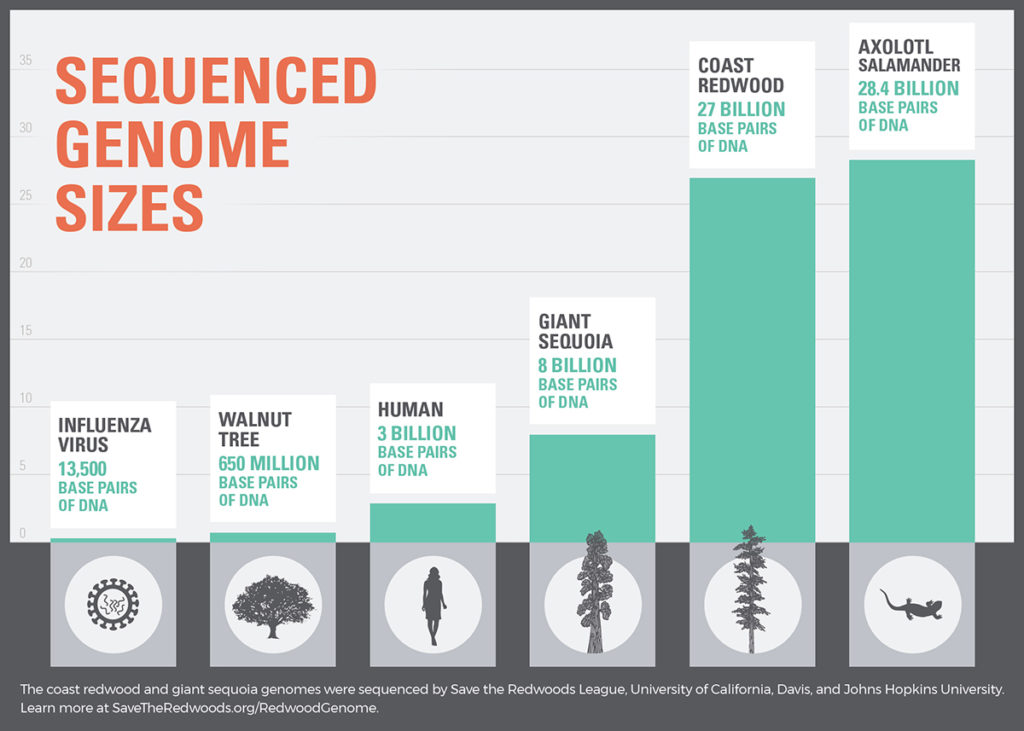Science guiding the future of restoration

Restoring coast redwood and giant sequoia forests to thrive hundreds or even thousands of years into the future will require new tools in addition to established techniques such as road retirement, soil stabilization, prescribed fire, and thinning. These forests lost more than just mass when so many ancient trees were felled. Each old tree that was cut represented a potentially genetically unique individual that contributed to the diverse strength of the forest. Moreover, many reforestation projects further restricted genetic diversity: the trees used for replanting were selected for rapid growth, a policy that risked the loss of genes associated with traits such as disease resistance and drought tolerance. Today’s forests differ from the ancient forests on the macro scale, but they also diverge at the molecular level.
This is a deficiency that must be remedied if we hope to restore and maintain coast redwood and giant sequoia forests for our grandchildren and their grandchildren. At the very least, we must ensure that no more genetic diversity is inadvertently lost. Restricted genetics are as great a threat to these forests as logging and development, especially in an era of dramatic climate change.
Protecting and re-establishing the genetic diversity of these forests requires first knowing the complete genomes of Sequoia sempervirens and Sequoiadendron giganteum. Now that we have these data, we have taken the first step toward the development of genetic screening tools that will inform and guide management strategies. Such strategies will enable forests to survive — indeed, thrive — in the emerging Anthropocene.
Sequencing technology improves
Tree genome sequencing technologies have advanced greatly in the past two decades. Initially, sequencing the exceedingly large and complex genomes of conifers was both time-consuming and prohibitively expensive. To date, scores of species have been sequenced, including familiar conifers such as Douglas-fir, sugar pine, and Norway spruce.
Though the technology for conifer genomic sequencing has been refined, sequencing the coast redwood genome still posed a significant challenge. Before its genome was fully mapped, all the conifers that were sequenced were diploid, meaning they have only two copies of each chromosome, just as humans do. Coast redwoods, by contrast, are hexaploid: They have six copies of each chromosome, which greatly complicates the sequencing task.

Cutting-edge genomic technology has also allowed researchers to rapidly discover and characterize the variation in genes that underlies an organism’s ability to adapt to its surrounding environment. The cataloguing of adaptive DNA sequence variations is crucial for redwood conservation because it allows researchers to identify specific trees that are especially well adapted in their particular regions under changing environmental conditions — drought and rising temperatures, for example. This work is also crucial for assessing genetic diversity within and across groves.
Restoration informed by science
Coast redwoods and giant sequoia harboring genes that may allow them to withstand environmental stresses are planetary treasures and integral to the League’s long-term conservation strategy. Our ability to protect the redwood forests will be predicated on our ability to conserve those components of the redwood genomes that contribute to tree health and forest resilience.
The League’s past genomic inquiries already have yielded valuable information about coast redwood and giant sequoia genetics that could aid conservation initiatives. By analyzing small sections of DNA called neutral genetic markers, research grantees discovered that giant sequoia groves may be inbred; that coast redwood “fairy rings” (circles of redwoods around stumps or dead trees) are not always clones; and that the southern coast redwood population is genetically distinct from northern populations.
Access the data
- Publication of coast redwood genome (December, 2021)
- Publication of giant sequoia genome (November, 2020)
- Sequence data available